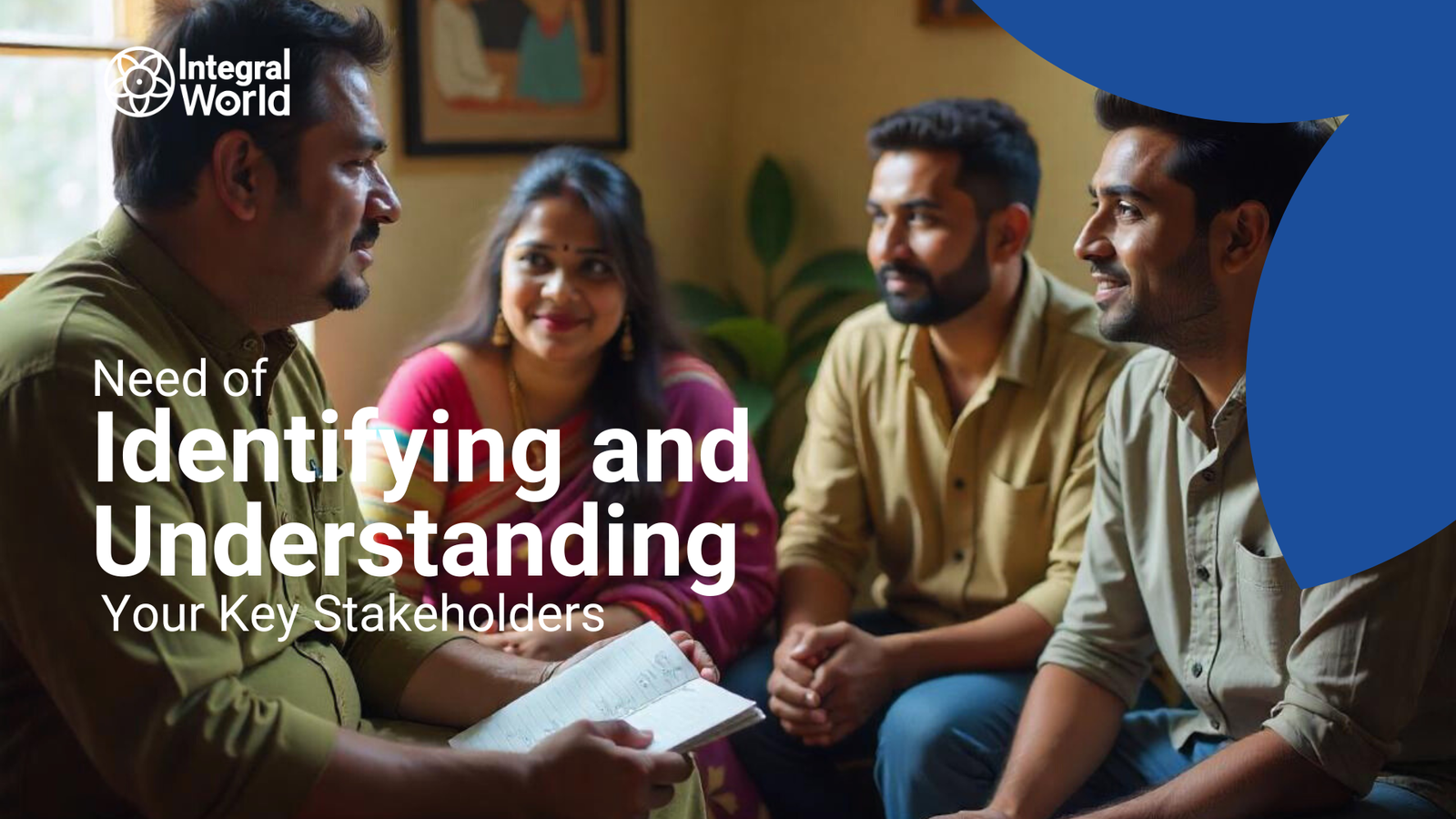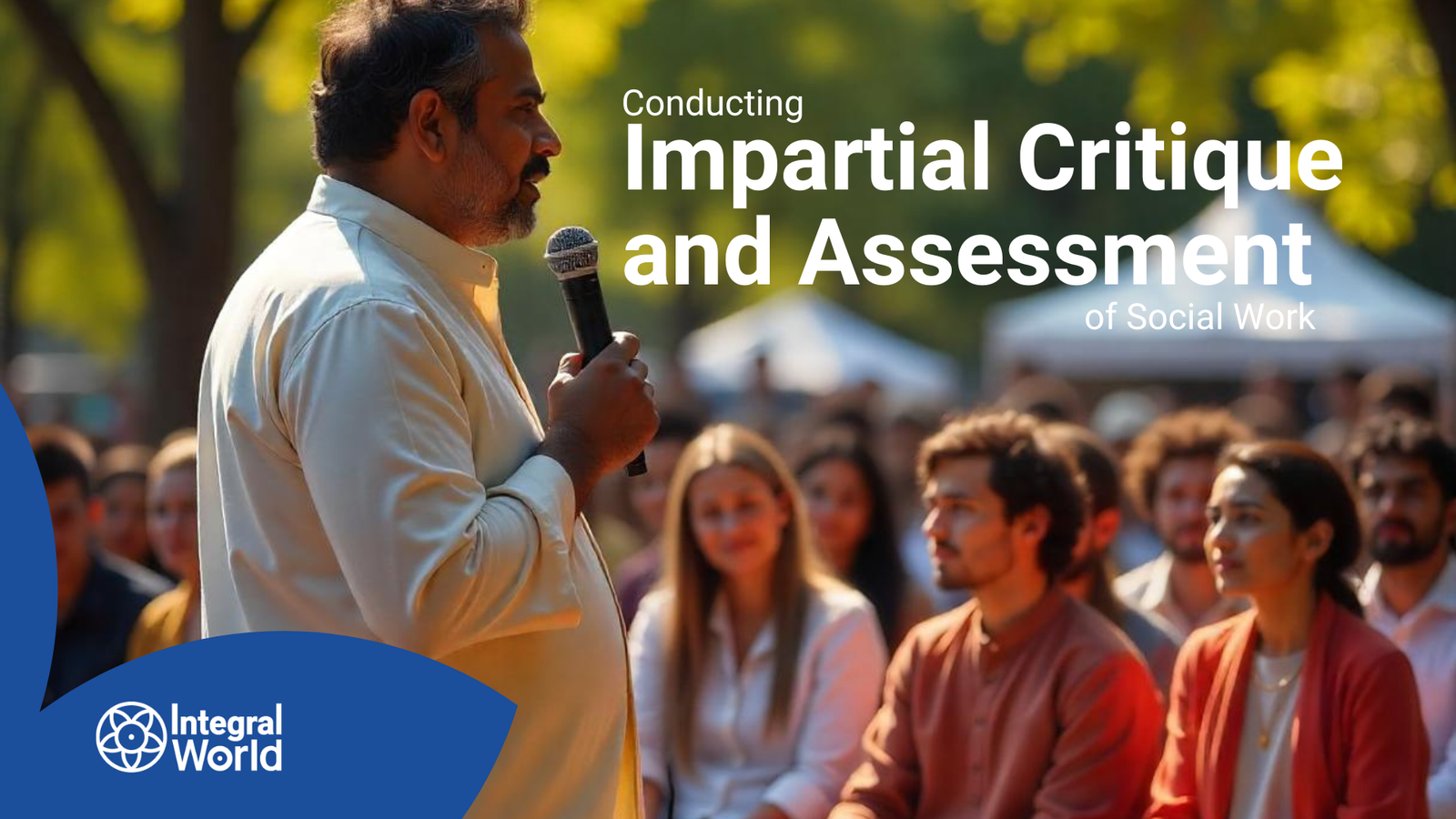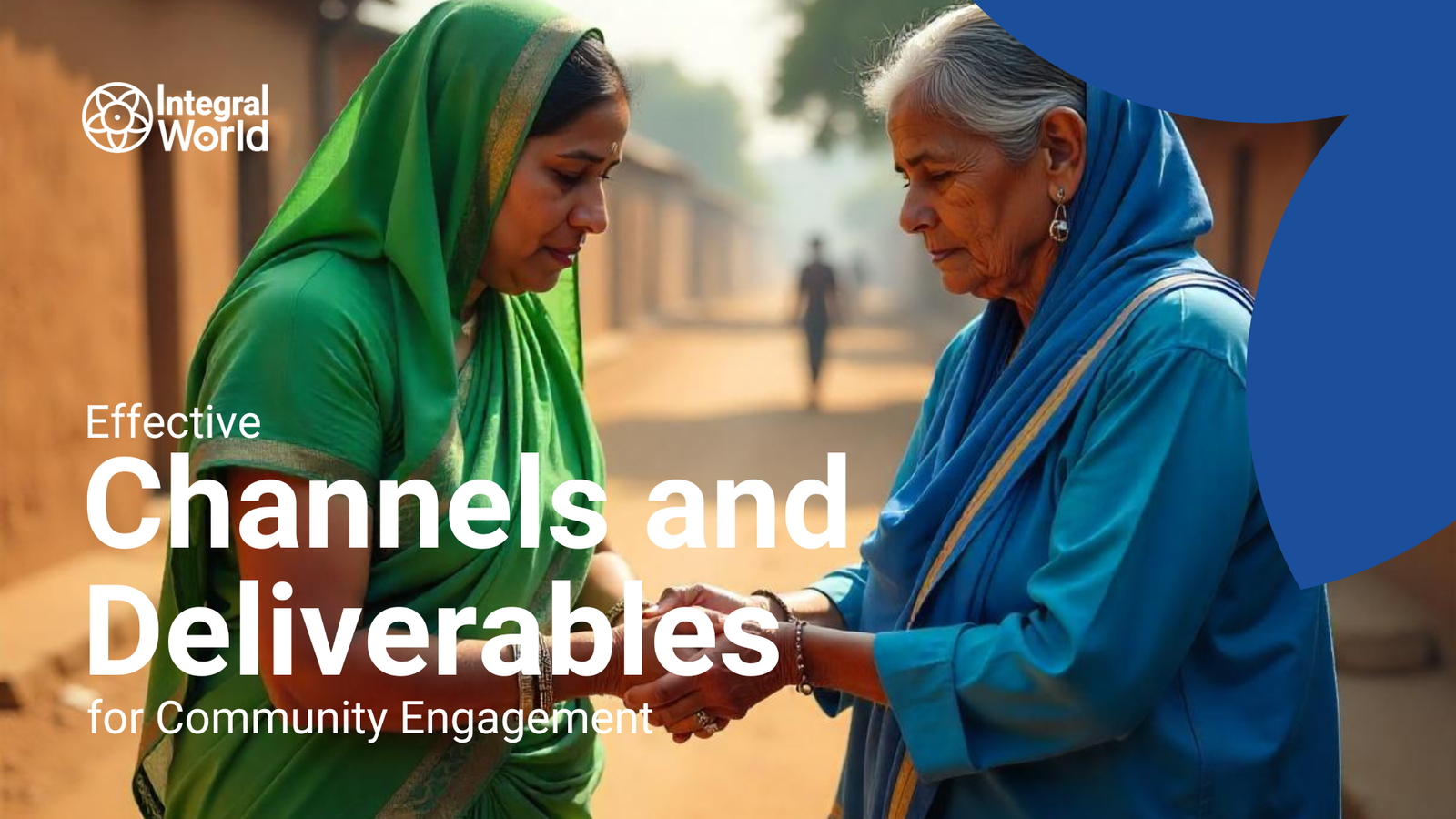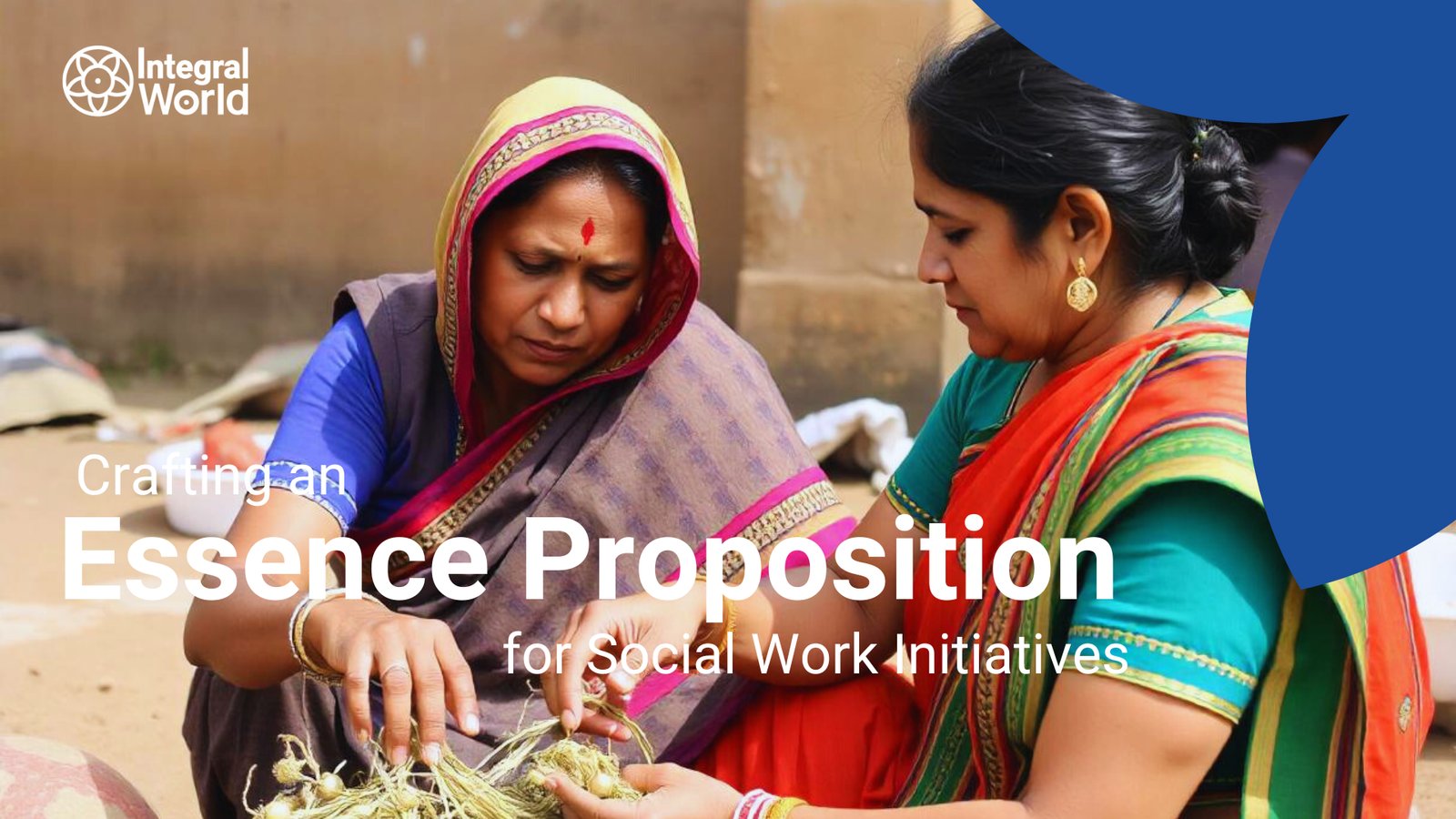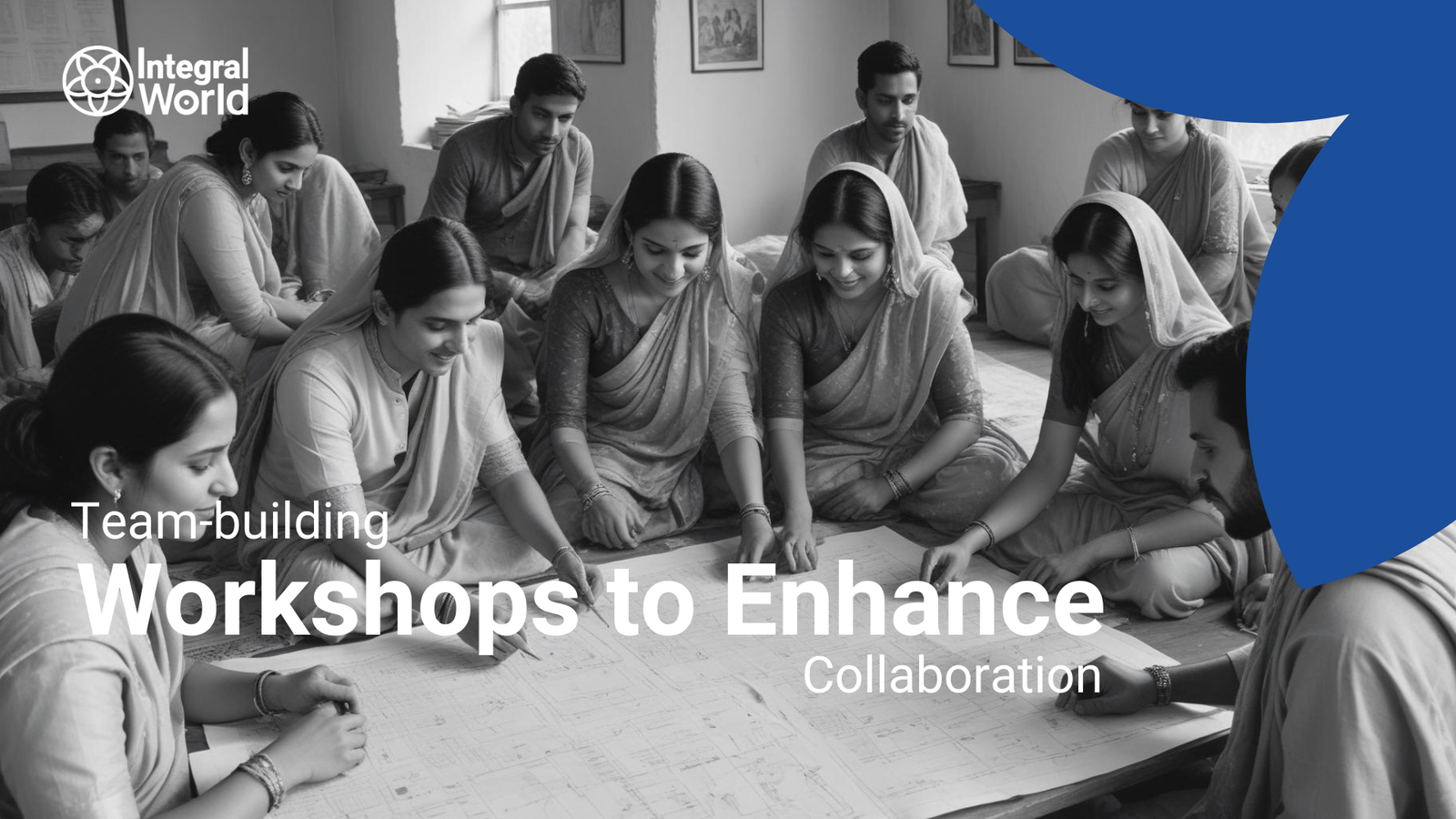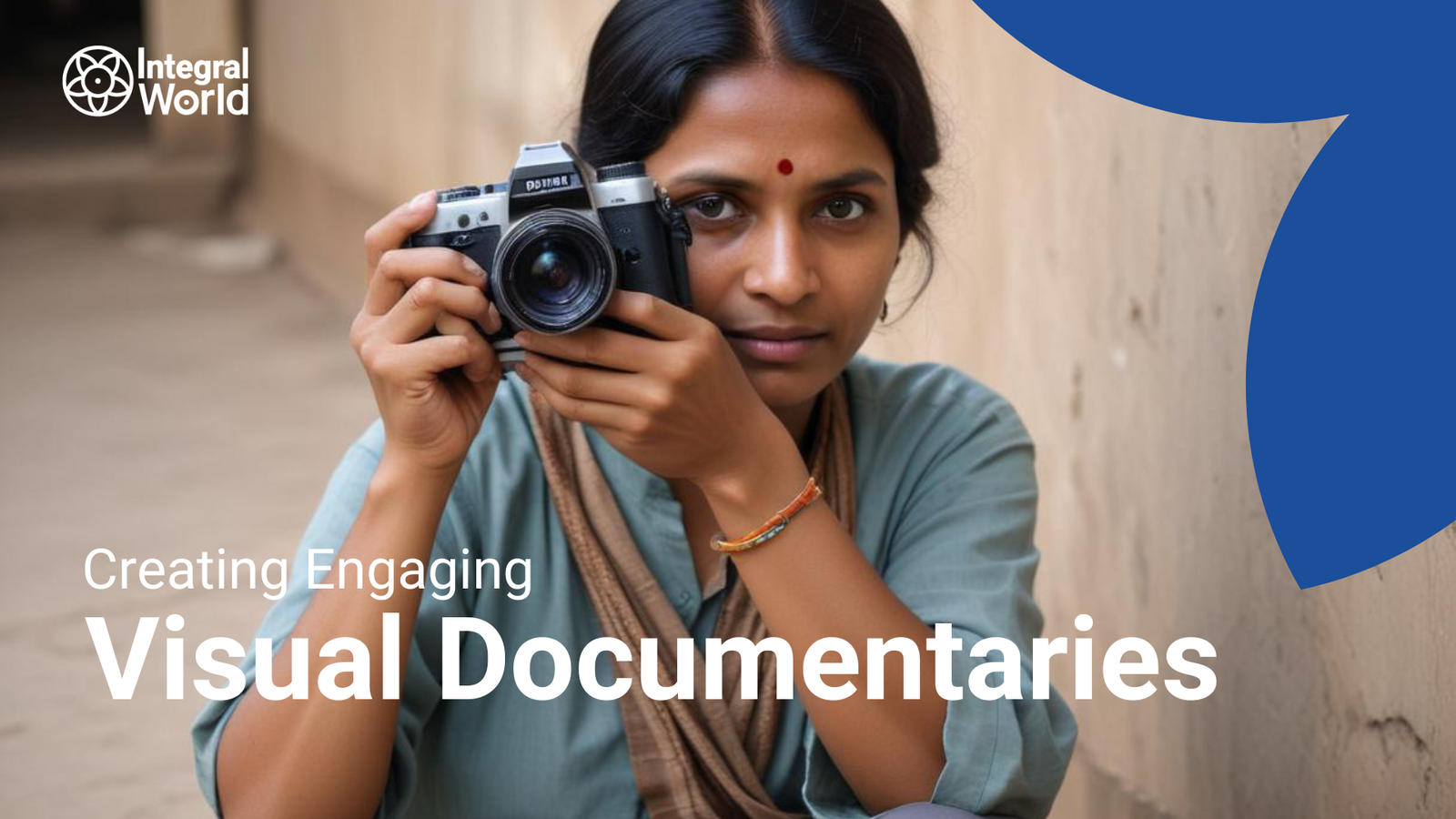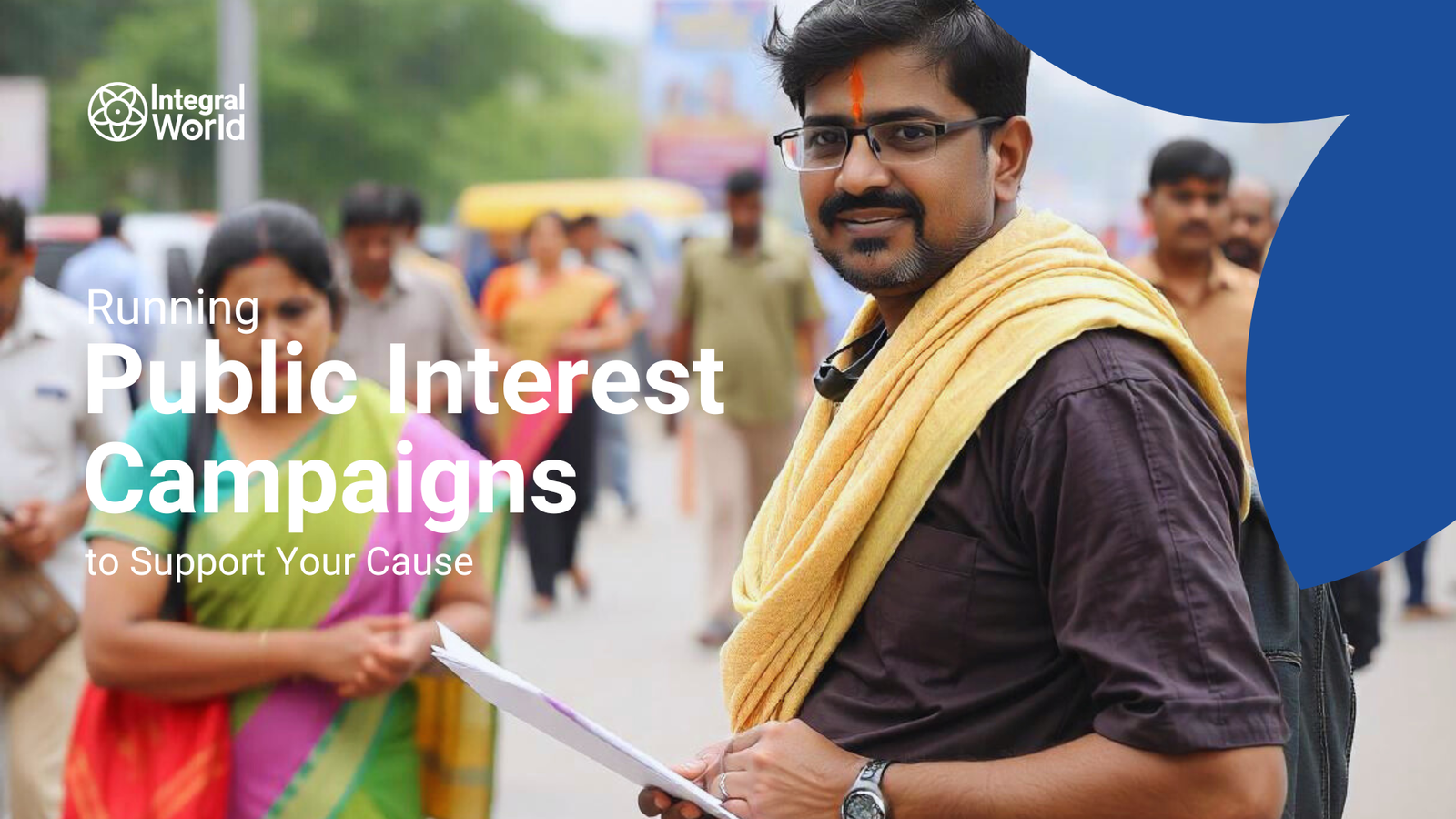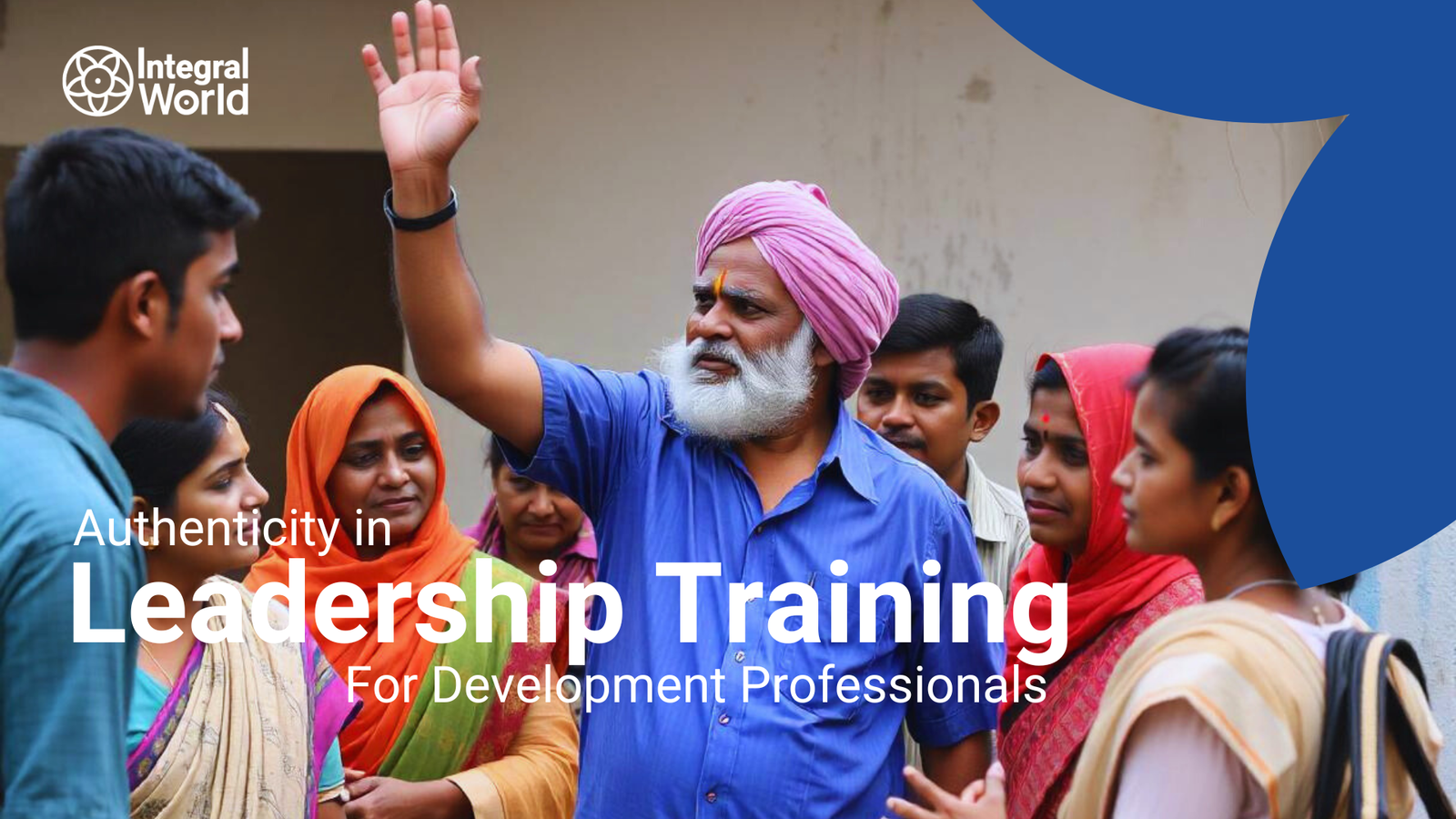This guide emphasizes the importance of stakeholder analysis for sustainable development. It offers actionable steps, expert insights, and real-world examples to help organizations effectively engage stakeholders and drive community-driven projects with meaningful impacts.
Continue readingConducting Impartial Critique and Assessment of Social Work
Impartial critique and evaluation are vital for social work effectiveness and stakeholder trust in non-profits. This paper explores maintaining authenticity, leadership’s role in fostering an authentic culture, and offers practical guidelines for organizations to achieve and sustain authenticity.
Continue readingUtilizing Digital Reporting for Transparency
Digital reporting is essential for building trust and authenticity in non-profits. Integral World explores how transparency drives engagement, highlights successful examples, and provides practical advice on fostering an authentic culture, emphasizing the key role of leadership in the process
Continue readingEffective Channels and Deliverables for Community Engagement
Community engagement is key to sustainability. This article guides organizations like Integral World in choosing the best channels and deliverables to build connections, boost participation, and achieve long-term goals.
Continue readingCrafting an Essence Proposition for Social Work Initiatives
An essence proposition defines an organization’s core identity and purpose. For Integral World, it can expand influence in sustainable development. This article offers insights from scholars and practical tips for crafting a strong essence proposition for NGOs.
Continue readingTeam-building Workshops to Enhance Collaboration
Team-building is key to sustainable development. Learn emerging trends and expert advice from Integral World to stay ahead and achieve goals.
Continue readingCreating Engaging Visual Documentaries
Authenticity is key for non-profits to build trust and impact. This article explores its role in storytelling and successful philanthropy.
Continue readingRunning Public Interest Campaigns to Support Your Cause
Discover how public interest campaigns, supported by strategic workshops and training, drive community empowerment and positive societal change.
Continue readingAuthenticity in Leadership Training for Development Professionals
In the non profit sector, leaders requires a distinctive combination of skills and qualities, with special emphasis on authenticity. Besides trust building, authenticity in leadership also drives the success of not-for-profit organisations as a whole.
The article discusses the importance of authenticity in leadership training for development professionals by providing insights, real world examples and some practical tips. Integral world is a thought leader and expert that helps non-profits achieve both authenticity and success.

The Power of Authenticity in Non-Profit Leadership
Authentic leadership means transparency, honesty and ethics commitment. For non-profits where trustworthiness and credibility are important aspects to consider, authentic leadership is essential. In addition to inspiring their teams, authentic leaders build stronger relationships with stakeholders fostering positive organisational culture.
Tips for NGOs to Maintain Authenticity
Transparent Communication
Communication that is open with all stakeholders is very essential. Keeping regular updates on finance reporting matters together with program outcomes can go a long way towards creating or sustaining trust.
Tip: Use diverse communication platforms such as newsletters, social media pages as well as public reports to keep stakeholders informed on various activities happening within the organisation. Demonstrating integrity entails transparency regarding achievements realised alongside failures experienced .
Ethical Practices
Maintaining ethical standards across board makes it possible for an entity to remain credible thus trustworthy This includes fair treatment of employees, ethical fundraising practices, responsible program implementation among others.
Tip: Establishing a code of ethics that guides everything else done by an organisation ought to be developed and enforced. Periodical review and revision of policies in line with best practices in the sector is ideal.
Stakeholder Engagement
Involving beneficiaries, donors, and community members in decision-making processes fosters a sense of ownership and trust. Adopting this participatory approach ensures that the activities done by the organisation are aligned to its stakeholders’ needs and expectations.
Tip: The establishment of advisory boards, carrying out surveys as well as holding community meetings is important in collecting views from different stakeholders.
Consistent Mission and Vision
The authenticity of an organisation should be reinforced by remaining faithful to its mission and vision. All programs, initiatives or partnerships should therefore correspond to the stated values or goals of an organisation.
Tip: It is advisable to keep visiting the organisation’s mission as well as vision statements on a regular basis just to confirm their continued centrality to all undertakings.

The Role of Leadership in Fostering an Authentic Organisational Culture
Leadership plays a very crucial role in developing an authentic culture within a non-profit institution. Leaders establish the tone for authenticity, influencing how their teams behave and think.
Leading by Example
Leaders who do what they say display authenticity through actions, decisions and interactions which inspire others accordingly. By doing so, trustworthiness is weaved throughout the organisation.
Tip: One can exhibit authenticity by admitting faults committed; showing vulnerability thereby transparency about personal values and motivations become very important.
Promoting Open Dialogue
Encouraging open dialogue that is honest within an institution fosters transparency as a cultural attribute . In order for staff members to feel free enough to bring out their ideas, concerns or feedback, leaders must create secure environments for them .
Tip: This includes holding team meetings regularly together with open discussions between one manager and his/her subordinate employees anonymously whereby inputs will be provided back through anonymous means.
Supporting Professional Development
Investing in leadership training and professional development for staff ensures they have the skills and knowledge required to lead authentically. This includes ethical decision-making, communication, and stakeholder engagement training.
Tip: Offer authentic leadership workshops, mentorship programs, online courses etc.
Practical Advice for Implementing Authentic Leadership Training
Develop Tailored Training Programs
Design leadership training programs that address the specific needs and challenges of your organisation; you might include ethics transparency stakeholders among others.
Tip: Collaborate with leading industry professionals to design learning resources with comprehensive coverage on authentic and other leadership areas.
Encourage Reflective Practices
Make leaders journal, discuss their visions with fellow colleagues so as to identify their motivations among other values deeply rooted within each one of them. The personality traits which enable this type of behaviour will make the group far more effective at what it does than any single individual could ever hope to achieve alone.
Tip: Provide resources such as time or spaces where leaders can always sit down in self-reflection or engage in self-evaluation exercises.
Foster a Learning Culture
Create an environment where continuous learning is valued as well as improvement activities are encouraged. Conduct evaluations whereby everyone is given a chance to offer feedback so that growth may happen; herein lies the key to fostering growth mindset in organisations through constructive criticism.
Tip: Foster a feedback culture where people regularly give and receive constructive feedback for growth and development purposes.
The Integral World Advantage
Integral World offers specialised workshop programs designed to foster authenticity and drive success in non-profits. Our approach includes:
Customised Training Modules: Specifically tailored to meet each organisation’s unique needs, thereby ensuring their effectiveness.
Expert Guidance: This is a perfect chance for getting professional insights as well as practical advice that can be easily applied since many of these trainers have gone through the same process before.
Practical Tools and Resources: A comprehensive resource pack for helping leaders at different levels of authenticity to guide themselves step-by-step into genuine leadership.
Conclusion
For not-for-profit organisations, authentic leadership is the key behind their success. By fostering transparency, ethical practices, and stakeholder engagement leaders can build trust among their followers and bring about real change. This will help us in achieving our goal; transforming your organisation’s impact with the integral world.
Conducting an Engagement Audit and Crafting a Call to Action
Non-profit organizations must effectively engage their stakeholders to have an impact and achieve their mission. An engagement audit and a compelling call to action are the two most important stages in this process.
The significance of these activities is examined in this article. It offers advice from industry insiders on how to improve one’s engagement strategy, as well as practical tips for those organizations looking to boost their engagement strategy.
Integral World, with its commitment towards sustainable and holistic development, stands in a good position of guiding organization through these integral processes.
Understanding Engagement Audits

What is an Engagement Audit?
An engagement audit is a thorough analysis of how well an organization engages with different parties like donors, volunteers, beneficiaries, and larger community. It looks into various touchpoints and interactions, evaluates the effectiveness of communication strategies, and finds areas for improvement.
“Engagement isn’t about a transaction; it’s about developing ongoing relationships” – Beth Kanter
The Importance of Engagement Audits
An engagement audit is significant for several reasons:
Better Relationships with Stakeholders: They help organizations understand stakeholder needs and preferences so that they can develop more impactful and lasting relationships.
Communication Improvement: It identifies gaps and opportunities in communication strategies to ensure that messages resonate with target audiences.
Impact Driven: Through aligning organizational goals with such engagements audits can drive greater impact.
Steps to Conduct an Engagement Audit
Step 1: Define Objectives and Scope
You need to clearly state objectives and scope of the audit. Consider what you want to achieve and which group of stakeholders you will concentrate on.
For example:
Objective: Examine donor involvement in order to discover ways to improve donor retention rates.
Scope: For the last five years focus on major contributors as well as regular donors.
Step 2: Collect Data
Gather both qualitative and quantitative information gathered from different sources including surveys, interviews, social media analysis among others.
For instance:
Use surveys to collect feedback from donors on their experiences and satisfaction levels. Analyze social media engagement metrics to understand how donors interact with your content.
Step 3: Analyze Findings
The data collected should be analyzed in order to discover trends, strengths, weaknesses and areas for improvement. Data visualization tools can be used to make the findings more clear.
For example: Highlight common themes in donor feedback that suggest sources of dissatisfaction or potential improvements required.
Step 4: Develop Recommendations
Have a list of implementable recommendations based on the analysis that help in enhancing stakeholder engagement. Prioritize them based on impact and feasibility.
For example: Recommendation: Implement a personalized communication strategy for major donors, including regular updates and exclusive event invitations.
Step 5: Implement and Monitor
Follow up on the recommendations given and keep monitoring progress over time. Continuously assess the effectiveness of new strategies and make adjustments as needed.
For example: Keep track of donor retention rates and engagement levels post-implementation to assess impacts brought about by the newly proposed communication strategy.
Crafting a Compelling Call to Action

The Power of a Call to Action
A call-to-action (CTA) is a statement that is meant to elicit an immediate response from listeners or readers. For instance, in non-profit organizations, an effective CTA may lead people into making donations, signing up as volunteers or engaging in advocacy activities.
“The secret ingredient for effective calls-to-action is clarity plus urgency” – Ann Handley
Elements of an Effective Call to Action
Clarity: Is your CTA clear? Is it easy for someone else to grasp its meaning? Avoid using jargon; use plain language instead.
Example: Prompt and easy to understand CTA: “Donate now in support of child education.”
Unclear CTA: Support our mission to improve educational outcomes for disadvantaged young people using several different initiatives.
Urgency: Create a sense of urgency that will prompt immediate action. Use time-bound language and highlight the importance of acting right away.
Example: Urgent CTA- Donate today towards our goal this month end.
Non-urgent CTA- We would appreciate your donation towards our cause.
Relevance: Customize your CTA based on audience interests and motivations. Showcase how their actions will make an impact.
Example: Relevant CTA- Help us protect endangered species; donate today to save their habitats.
Irrelevant CTA- Support our environmental initiatives.
Best Practices for Crafting CTAs
Use Strong Verbs: Start your call to action with a strong verb that communicates exactly what you want them to do.
Example: Sign up, Donate, Join, Support
Make it Specific: State clearly what you expect the audience to do as well as the results of their action.
Example: Donate $50 so that one needy child can have enough school supplies for one month, instead of just saying, Please donate some money for kids’ schooling stuff.
Keep it Short: Be concise with your call-to-action, avoiding extra words that could water down its intended meaning.
Example: Volunteer with us today then we are looking for volunteers who will help us during our forthcoming events and initiatives. Sign up now.
Test and Optimize: Always test different CTAs regularly and see how they perform. Employ A/B testing which compares variations then optimizes them based on results.
Example: Test out different phrasing, placement or design elements in order to find the most effective call-to-action.
Success Stories: Effective Engagement and CTAs
Case Study 1: World Wildlife Fund (WWF)
To get a better understanding of its donor base and enhance communication strategies, WWF conducted an engagement audit. Personalized email campaigns were developed using the report findings. Additionally, targeted social media ads were deployed. CTAs were also crafted to create a sense of urgency in relation to the need for protecting endangered species.
Impact:
- Increased donor retention rates by 15%
- Higher engagement rates on social media platforms
- Significant growth in online donations
Case Study 2: Charity Water
Charity Water is known for its powerful CTAs and engaging storytelling. They have clear, urgent, and relevant CTAs that drive donations and support for clean water projects. Many times, their CTA’s include specific donation amounts and emphasize how much the money will impact communities directly.
Impact:
- Raised millions of dollars through online campaigns
- Funded clean water projects in multiple countries
- Increased awareness and engagement through effective storytelling
“Storytelling is the most powerful way to put ideas into the world today.” – Robert McKee
Actionable Tips for Organizations
1. Conduct Regular Engagement Audits
Conduct regular engagement audits to evaluate how well your strategies are working as well as identify areas that need improvement. Use this data-driven approach to improve stakeholder relations.
2. Craft Clear and Compelling CTAs
Take time when writing your CTA’s such that they can be understood immediately by anyone who reads them while still being compelling enough to generate action or change behavior towards your desired goal.
3. Leverage Data and Insights
To improve relevance and the effects, divide your viewership into segments and produce personalized CTAs for each of them.
4. Integrate CTAs Across Channels
Make sure you mix up CTAs on all platforms such as: websites, social media profiles, email newsletters, and printed materials.
“Consistency is key. Consistent messaging builds trust and credibility.” – Neil Patel
Conclusion
A non-profit organization must undertake an engagement audit and craft a compelling call to action in order to increase its effectiveness and create a meaningful impact.
In understanding stakeholder needs, optimizing communication strategies as well as crafting clear and urgent CTAs, organizations can have stronger relationships and eventually fulfil their mission more effectively.
Integral World is focused on assisting firms through that process by enabling them identify their own values, improving engagement levels as well as pushing forward sustainable change.
Reach out to us today so we can tell you more about how we assist organizations to define their core values for sustainable change. Join our next initiative or become part of the global movement for holistic development and social justice.

